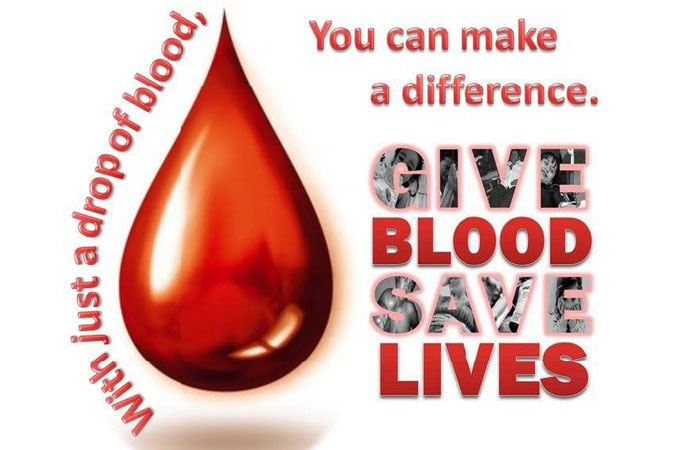
We only understand the importance of blood donation when someone close to us is in need of it. A few days back my cousin contacted me to know the availability of blood for her friend’s father who met with an accident. Unfortunately, we lost him due to excess blood loss. We know of this incident because it’s a dear friend’s father but, on a daily basis there are so many such cases where there is loss of death due to non-availability of blood.
Statistics show that roughly every year in India there are 234 million major operations, 63 million trauma-induced surgeries, 31 million cancer-related procedures and 10 million pregnancy related complications which require blood transfusions.
Apart from these there are also disorders like sickle cell anemia, thalassemia and hemophilia that require repeated blood transfusions.
One of the main reasons for lack of blood is, many people are skeptical about blood donation. They have fears of contracting infections during blood donation, fear of the needle or feeling weak after blood donation. Human body approximately has 4.7-5.5 L of blood, out of it only 350/ 450 ml of blood is withdrawn during blood donation drives and it takes only a day or two to replenish the fluid volume in the body and three months for the regeneration of red cells to donate more blood.
There is no substitute for human blood. Blood cannot be manufactured – it can only come from
volunteer donors like you and me. One blood donation can save 3 lives. But, unfortunately only 1 % of volunteer donors come forward to donate blood and majority of the blood donation comes from replacement donors.

Replacement donors are friends and relatives of a patient who donate blood as replacement for the blood given to the patient.
At times, these replacement donors (friends and relatives) are more likely to harm the recipients by hiding or overlooking the many don’ts of donation.
Though voluntary self-referral to donate without citing reasons is widely accepted, replacement donors rarely adhere to it either to hide their high-risk behavior or due to pressure to meet the immediate demand for certain units of blood. As a result, the prevalence of HIV, hepatitis B, and hepatitis C is much higher among family donors when compared to voluntary donors, according to a 2012 study published in the Asian Journal of Transfusion Science.
Donation of safe blood can be achieved only when replacement donors are replaced by healthy volunteer donors to meet ‘over 95 per cent of blood requirement’. This can be done through increased awareness, providing appropriate facilities for people to donate blood, and improved donor retention.
While donating blood always be truthful about your health status!
Do not donate blood if you have any of these conditions
- Cold / fever in the past 1 week.
- Under treatment with antibiotics or any other medication.
- Cardiac problems, hypertension, epilepsy, diabetes (on insulin therapy), history of cancer, chronic kidney or liver disease, bleeding tendencies, venereal disease etc.
- Major surgery in the last 6 months.
- Vaccination in the last 24 hours.
- Miscarriage in the last 6 months or have been pregnant / lactating in the last one year.
- Had fainting attacks during last donation.
- Have regularly received treatment with blood products.
- Shared a needle to inject drugs/ have history of drug addiction.
- Had sexual relations with different partners or with a high risk individual.
- Tested positive for antibodies to HIV.
- If you are Underweight ( below 50 KGs)
Pregnancy and Menstrual Cycle
- Females should not donate blood during pregnancy and lactation.
- Females should not donate blood if they are having heavy menstrual flow or menstrual cramps.
Do donate blood if…
- You are between age group of 18-60 years.
- Weight is 50 kgs or more.
- Hemoglobin is 12.5 gm% minimum.
- Last blood donation was 3 months earlier.
- You are healthy and have not suffered from malaria, typhoid or other transmissible disease in the recent past.
It’s time that we take up the responsibility to do voluntary blood donation. Donate Blood without waiting for a call.




I read your article, you did wrote it amazingly. Actually the thing is that our youth must understand that ” How important is blood circulation? “. But the thing is that this must be taught to them from the school level. We don’t really have any material in our schooling that shows any relation toward this issue. Which is kind of scary, because the requirement of the blood has increased massively and if we won’t do anything about it then many of lives are going to be lost.
Loved it. Very nicely written, doc! Sharing it.